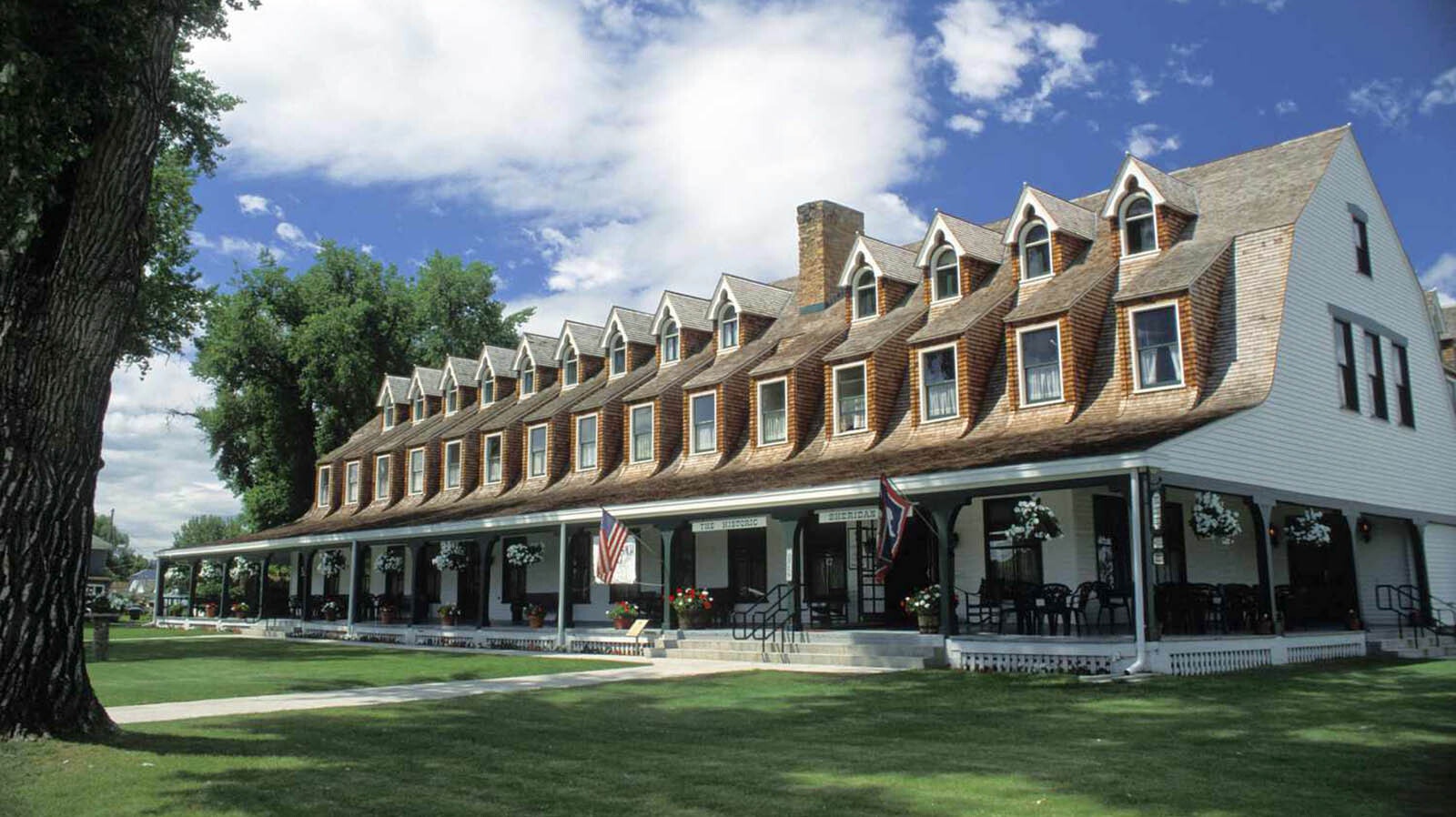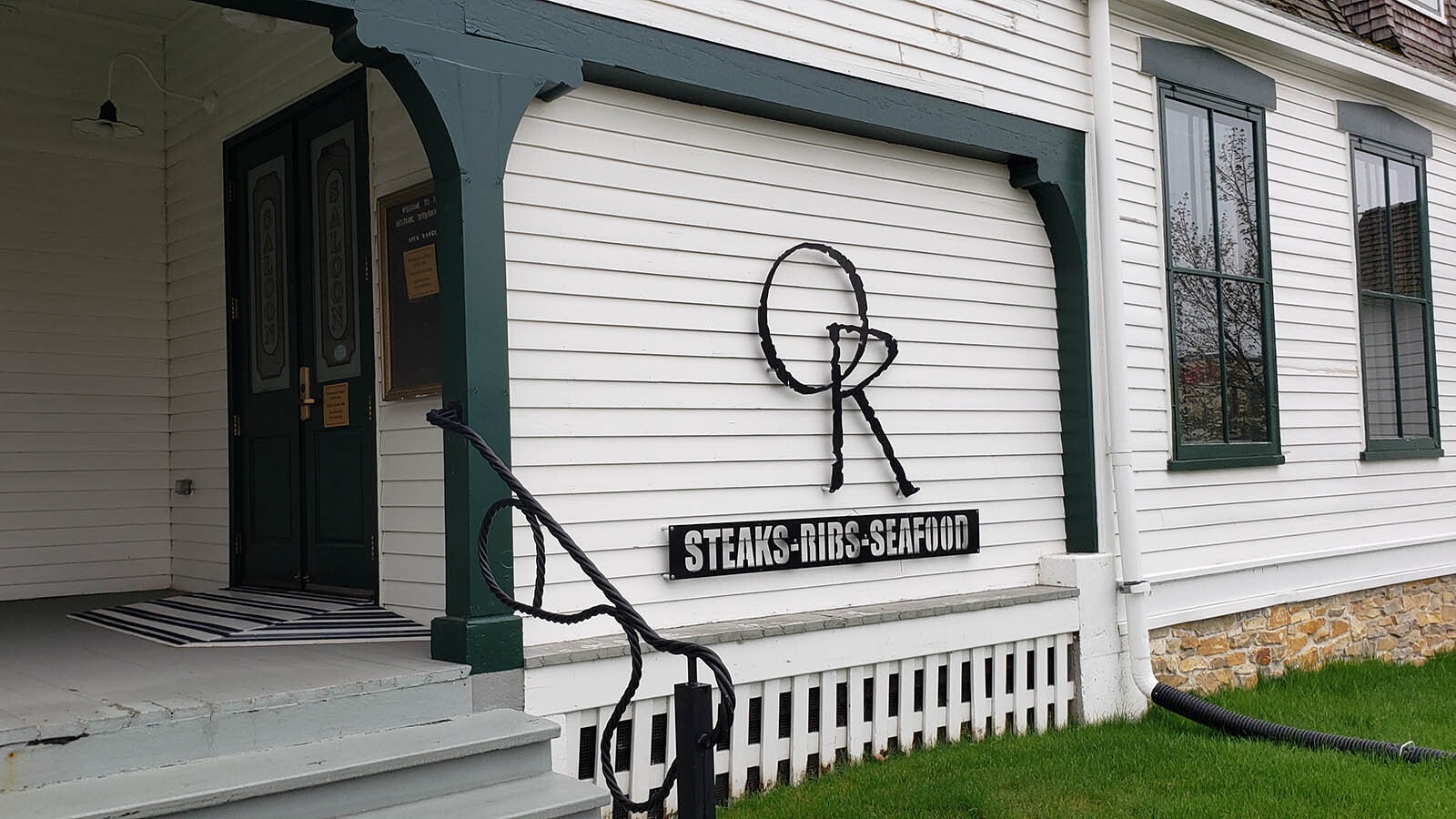Cracks in the wall of the Sheridan Inn were the only clue that something was going drastically wrong with the historic building that Buffalo Bill Cody built in the 1890s.
It was a little more than 20 years ago in the early 2000s, and Edre Maier, then executive director of the Sheridan Heritage Center which owned the Inn, was told not to worry about it.
It was just routine settling and normal for a building more than 100 years old.
“One of my board members said, ‘You’re a girl, you don’t know anything that you’re talking about,’” Maier said.
But Maier wasn’t convinced that the cracks in the wall were nothing to worry about. And, while it might be true that she was a girl and knew little about building construction, she knew how to find those who did know.
She brought in a specialist from Colorado, who used ground-penetrating radar to look into the problem non-invasively.
The prognosis was dire.
“They said we had two years to save it,” Maier said. “But we got into it, and we didn’t have six months before it fell into Fifth Street.”
Saving the Sheridan Inn this time would ultimately be a $6 million project — a lot of money to raise at the turn of the century with private donors and a bake sale here and there.
Not only that, though, Maier really had her work cut out for her when it came to rallying the troops to once again save the Sheridan Inn.
“Some of the board members said, ‘Oh we’re so tired of hearing the words, ‘Save the Inn, save the Inn,’” Maier recalled. “People had wanted to tear it down many, many times.”
In 1967, after the Inn had been closed, people wanted to demolish the historic inn and replace it with a shopping center, Maier recalled.
It was saved that time by the granddaughter of Frank Nelson Doubleday, a woman who went only by the name Neltje, who renovated and reopened the Inn in 1968, operating it another 18 years.
Neltje wouldn’t be the last to step in and save the Inn. There were many others. And each time Maier said people would say, “Oh. You know, it’s like an old tree. Let’s tear it down and start whatever we want to put there.”
Ghosts At The Inn
Maier eventually came to love the Sheridan Inn, but she hadn’t initially joined the Sheridan Heritage Center board due to any particular burning passion she had for the Inn at the time.
“I believed that people should be on different boards for communication reasons,” she said. “I’m a firm believer in eye-to-eye contact and talking.”
Ultimately, what won her over to the Inn were its ghosts.
“Buffalo Bill was there, and Miss Kate was there,” she said. “And you just had the experiences that most people have at the Sheridan in that are — you cannot explain them.”
Like the time she heard children’s laughter on the third floor of the Inn.
“I went up there and went through the rooms,” she said. “And it was a lot of dust at the time.”
In that dust she saw the squiggly hand marks of children in the dust.
Or the time her dog, who was a frequent companion with her at the Inn, started barking out of the blue and wagging his tail as if really happy to see someone.
“I went into the room with him to see who it was,” Maier said. “And no one was there.”
Then there was the cold presence, often on the stairs, that Maier came to believe was Miss Kate, following Maier up to her second-floor office.
“I would meet her on the stairwell steps almost daily,” Maier said. “I would have experiences at least once a month.”
Those experiences haven’t stopped, either.
“This year, my husband’s sisters were up so I gave them a tour,” she said. “And we were on the floor, and I said, just to be smart, ‘Good night, Miss Kate.’ And we heard this ‘Good night!’”
Maier looked at her husband and her husband looked at her.
“I said, ‘Did you say that?’ And he said, ‘No, did you say that?’ And I said, ‘No, no, no.’”
Then they all raced down the stairs together, not waiting to hear if anything else would be said.
“Stuff like that happened all the time,” Maier said.
A Fast $4 Million
Those unexplainable experiences prompted Maier to do more homework about the Inn and learn more about the figures haunting it — even as she tried to deny, publicly at least, that there were any ghosts.
“I was afraid they’d come just to get an experience,” she said. “And if they didn’t have an experience, they’d go away. Plus, that’s not what we were about. We were about architecture and a historic building and history.”
Through that research she came to realize the Inn was a special place in Wyoming, an irreplaceable piece of its history. She couldn’t let it fall on her watch.
“We had to raise money really quickly,” she said. “And the construction company had to commit to it quickly to save it.”
The initial estimate for saving the building was $4 million. It involved first supporting the structure with steel rods so that the entire failing wall could be torn out to rebuild the foundation.
During the construction, it was discovered the original builders had failed to put cement in that part of the wall. There were just some rocks.
“In (1893), when it was first built, it was built beside the railroads,” Maier said. “And we found lots of things that were done differently, as if a train crew had come in and done this (part) and then they had to leave, and a different train crew came in and did that (part). Like there were windows right next to each other that were done differently.”
The area without cement and only rock seemed to be one of those placeswhere workmanship wasn’t consistent with the surrounding areas, suggesting the next crew hadn’t realized that part wasn’t really finished.
Not Out Of The Woods Yet
The construction crews took care to preserve as much of the original inn as possible when they were working. But, once the foundation was fixed and the wall rebuilt, the Inn was still not quite out of the woods yet.
“What blew me away was, after we got through that project, to do the second and third floors where we wanted to redo the rooms, we found out it was going to cost an additional $2 million,” she said. “They found out that what we wanted to do, the building would not support that weight. So, we had to put steel beams beside the wood beams. So, beside every wood beam you see in the Sheridan Inn, there’s a steel beam.”
That second leg of the project proved too much for Maier and the board. Ultimately, they sought a private buyer who could finish the rest of the work updating the Inn so it could accommodate modern guests.
“The second floor had nice rooms,” Maier said. “The third floor was for the help, so they were small, small rooms. They fit a bed and a dresser and a pot and that’s it.”
To finish that part of the restoration, the board ultimately sought a private investor, who finished the project.
“They sold it to a guy whose mother was in the restaurant,” Maier said. “And his company and his employees bought the building, fixed it up, and then they sold it to Best Western, who is doing a great job.”
Today, when Maier goes back, she is glad to see the Inn is becoming once again a vibrant part of the community.
“Thank heavens we still have it and that it should be good for another 50, 100 years,” she said. “Like I said, everything is steel. The Foundation is good. The wooden beams are supported by steel.”
Edre was recently recognized with a Humstone Historic Preservation award for Lifetime Achievement for decades of preservation efforts, which include helping save the Sheridan Inn, as well as her roles in establishing Sheridan Railroad Historic District and the Sagebrush Community Art Center.
Maier likes to say she is one in a long line of people who helped save the Sheridan Inn, a line that started with the building’s original architect, Thomas R. Kimball.
“That’s what ultimately saved the building from falling over,” she said. “He had like an upside-down hull of a ship, with rods going through it. And you can see them in the ballroom. They have like flowers on them, and those ran all the way through the building to the ceiling. That’s ultimately what saved the Inn from falling over.
“So, we are thankful for the architect who built it,” Maier continued. “That’s why we have a building today.”
Renée Jean can be reached at renee@cowboystatedaily.com.















